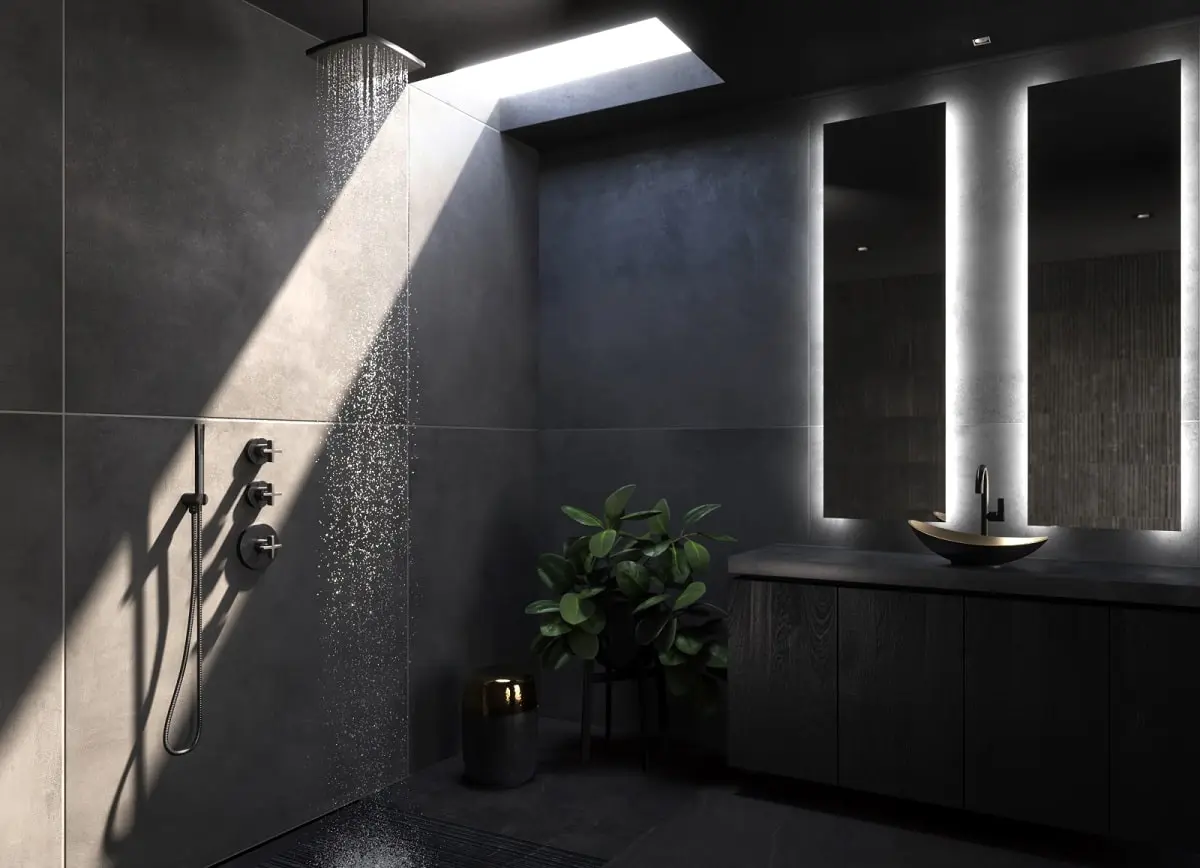A bathroom makeover can breathe new life into your home, transforming a purely functional space into a sanctuary of relaxation and comfort. This transformation is not just about aesthetics; it’s about creating a space that reflects your personal style while enhancing the overall functionality and value of your home. Whether you’re looking to update a few key elements or planning a complete overhaul, a well-executed bathroom makeover can turn your vision into reality.
Introduction to Bathroom Makeovers
The journey to revamp your bathroom begins with understanding the scope of your project. It might range from simple cosmetic updates, like painting walls and replacing fixtures, to more comprehensive renovations that include changing layouts and upgrading plumbing. Each approach requires careful consideration of your desires, budget, and the potential return on investment.
Moreover, a successful bathroom makeover is not solely about the end product. It’s about the process—planning, budgeting, choosing materials, and deciding whether to DIY or hire professionals. This guide aims to equip you with the knowledge and tools needed to navigate the complexities of bathroom renovations, helping you make informed decisions every step of the way.
From the latest design trends that blend functionality with elegance, to selecting materials that stand the test of time, this article delves into the essentials of bathroom makeovers. We’ll explore innovative storage solutions for optimizing space, eco-friendly options for those looking to reduce their environmental impact, and the pros and cons of undertaking a DIY project versus enlisting the help of professionals.
Embarking on a bathroom makeover journey can be daunting, but with the right preparation and insights, the process can be rewarding, culminating in a bathroom that not only meets your practical needs but also serves as a personal retreat.
Planning Your Bathroom Renovation: A Step-by-Step Guide
Embarking on a bathroom renovation requires meticulous planning and organization. This guide breaks down the renovation process into manageable steps, ensuring your project runs smoothly from conception to completion.
1. Define Your Vision and Goals: Start by determining the scope of your makeover. Are you updating the look, improving functionality, or both? Create a wishlist of features and changes you desire. Browsing design websites, magazines, and visiting showrooms can provide inspiration and clarify your preferences.
2. Set a Realistic Budget: Once you have a clear vision, it’s crucial to establish a budget that reflects the scale of your project. Include a buffer of at least 15-20% for unforeseen expenses. This financial plan should cover everything from materials and labor to permits and decorative elements.
3. Measure and Assess Your Space: Accurate measurements are foundational to planning. Evaluate the current layout, noting what works and what doesn’t. Consider whether structural changes are feasible or if you should work within the existing footprint.
4. Design the Layout: With measurements in hand, sketch out potential layouts or use online design tools. Consider consulting with a designer if the project is complex. Think about traffic flow, usability, and how the space can best serve your needs.
5. Choose a Timeframe: Timing is everything. Determine when you want the project to start and end, taking into account lead times for materials and any personal commitments. Be realistic about the duration of the renovation.
6. Select Materials and Fixtures: Decide on the materials and fixtures early in the planning process. This includes tiles, countertops, cabinets, lighting, and plumbing fixtures. Your budget and design style will guide these choices.
7. Hire Contractors or Plan for DIY: Depending on the project’s complexity and your skills, decide whether to hire professionals or undertake some work yourself. For significant renovations, a contractor can coordinate the various tradespeople needed.
8. Secure Permits: Ensure your project complies with local building codes. Some renovations require permits, especially if you’re altering plumbing or electrical systems. Your contractor can often handle this, but it’s good to be informed.
9. Plan for the Unexpected: Renovations can uncover unexpected issues, such as plumbing or electrical problems hidden within walls. Prepare mentally and financially for potential surprises.
10. Enjoy the Process: While renovations can be stressful, try to enjoy the journey. Making decisions and watching your vision come to life can be incredibly rewarding.
By following these steps, you can approach your bathroom renovation with confidence, knowing that you’re well-prepared for the challenges and decisions ahead. This careful planning not only ensures a smoother renovation process but also helps in achieving a bathroom that aligns with your vision, functionality needs, and budget.
Budgeting for Your Bathroom Makeover: Tips and Tricks
Effective budgeting is crucial for a successful bathroom makeover. It ensures that the project stays within financial bounds without sacrificing quality or design. Here are practical tips and tricks to help you budget wisely and get the most out of your investment.
Understand the Costs: Begin by breaking down your project into components such as labor, materials, fixtures, and unexpected expenses. Labor can consume a significant portion of the budget, particularly for tasks requiring specialized skills like plumbing and electrical work. Materials and fixtures vary widely in price, influenced by quality, brand, and aesthetics. Setting aside a contingency fund of at least 10-20% for unforeseen costs can prevent budget overruns.
Prioritize Your Renovation Needs: Identify which aspects of your bathroom are most in need of renovation. Prioritizing allows you to allocate funds to critical areas first, ensuring essential improvements are not overlooked. For example, if your bathroom suffers from mold due to poor ventilation, investing in a quality exhaust fan should take precedence over aesthetic upgrades.
Seek Multiple Quotes: For any work you’re hiring out, obtain quotes from several contractors. This not only gives you a clearer picture of the expected costs but also provides leverage for negotiating better rates. Ensure the quotes are detailed, breaking down the costs of materials, labor, and any other fees.
DIY Where Possible: Consider taking on some of the work yourself, especially tasks that do not require specialized skills, such as painting or installing simple fixtures. DIY projects can significantly reduce costs, but be realistic about your skills and the time commitment required. Overestimating your abilities can lead to costly mistakes that may outweigh the savings.
Choose Materials Wisely: Material costs can vary dramatically, but higher prices do not always equate to better quality. Research materials that offer durability and aesthetic appeal without breaking the bank. For instance, ceramic tiles are a cost-effective, water-resistant flooring option that comes in various designs.
Look for Deals and Discounts: Keep an eye out for sales at home improvement stores, online retailers, and local outlets. End-of-line, clearance items, and lightly damaged goods can offer significant savings. However, ensure that the quality and functionality meet your needs before making a purchase.
Reuse and Refurbish: Before replacing items, consider whether they can be refurbished or repurposed. Refinishing existing fixtures, such as bathtubs or cabinets, can give them a new lease on life at a fraction of the cost of new items.
Invest in Energy-Efficient Features: Although energy-efficient fixtures might have a higher upfront cost, they can lead to long-term savings on utility bills. Water-saving toilets, LED lighting, and energy-efficient exhaust fans are examples of upgrades that can reduce your environmental impact and save money.
Plan for Long-Term Value: While it’s tempting to cut corners to save money, investing in quality where it counts can enhance the longevity and value of your renovation. Areas prone to wear and moisture, like flooring and countertops, warrant investment in durable materials.
Track Your Spending: Keep a detailed record of all expenses as your project progresses. This will help you stay on budget and make informed decisions if adjustments are needed.
Budgeting effectively for your bathroom makeover can make the difference between a project that feels like a financial burden and one that is a rewarding investment in your home. With careful planning, creative solutions, and a bit of savvy shopping, you can achieve the bathroom of your dreams within a budget that works for you.







